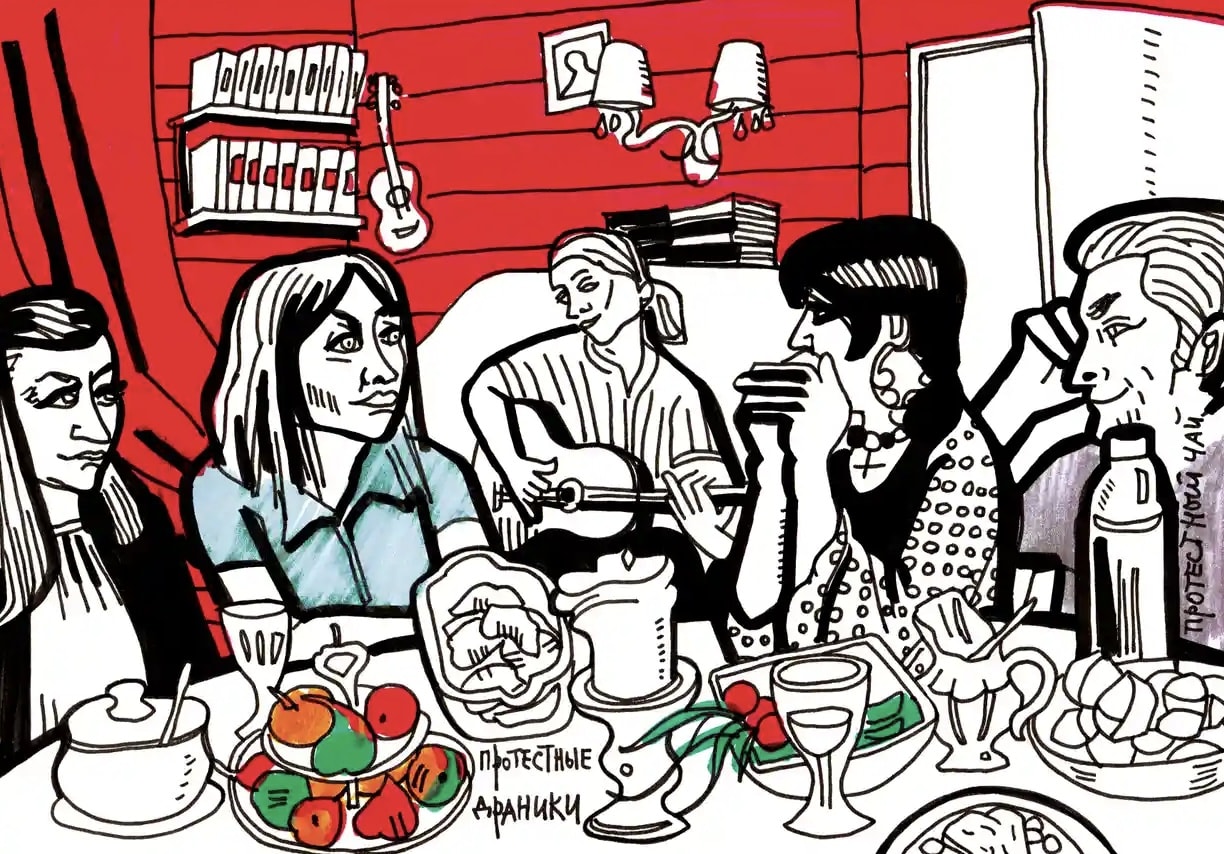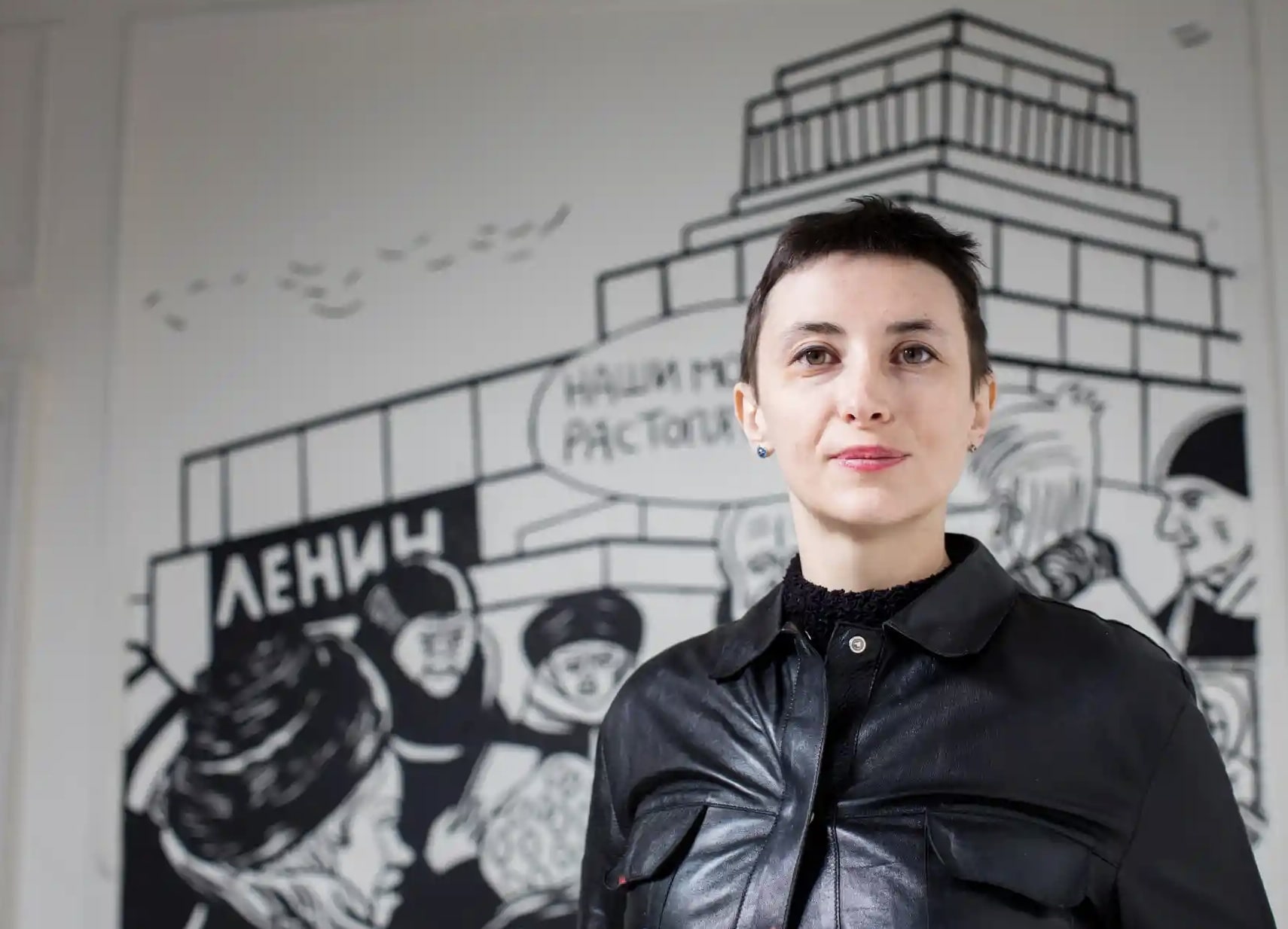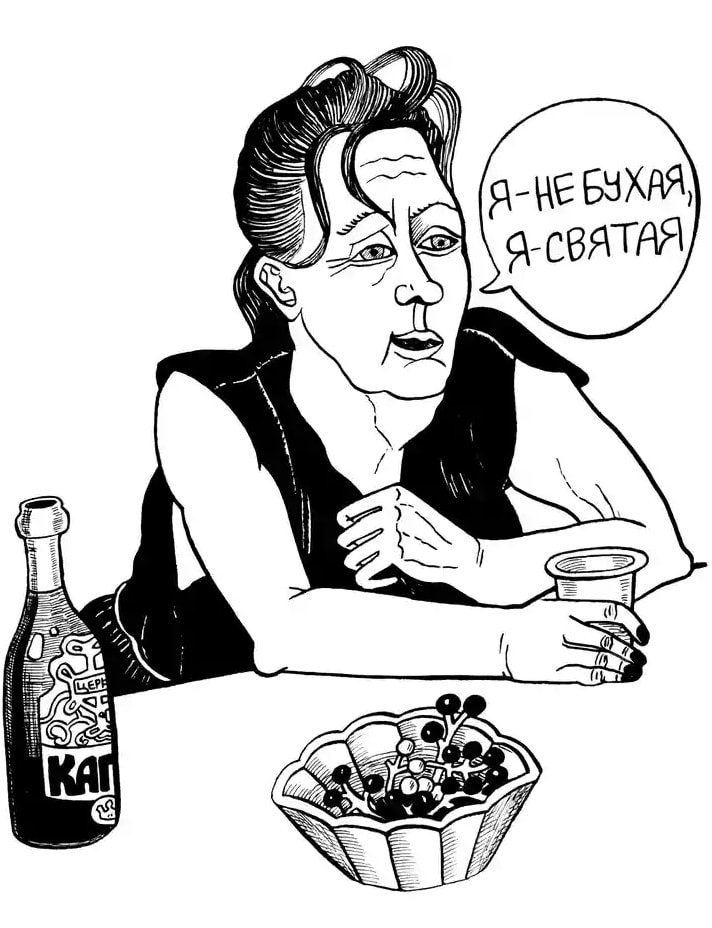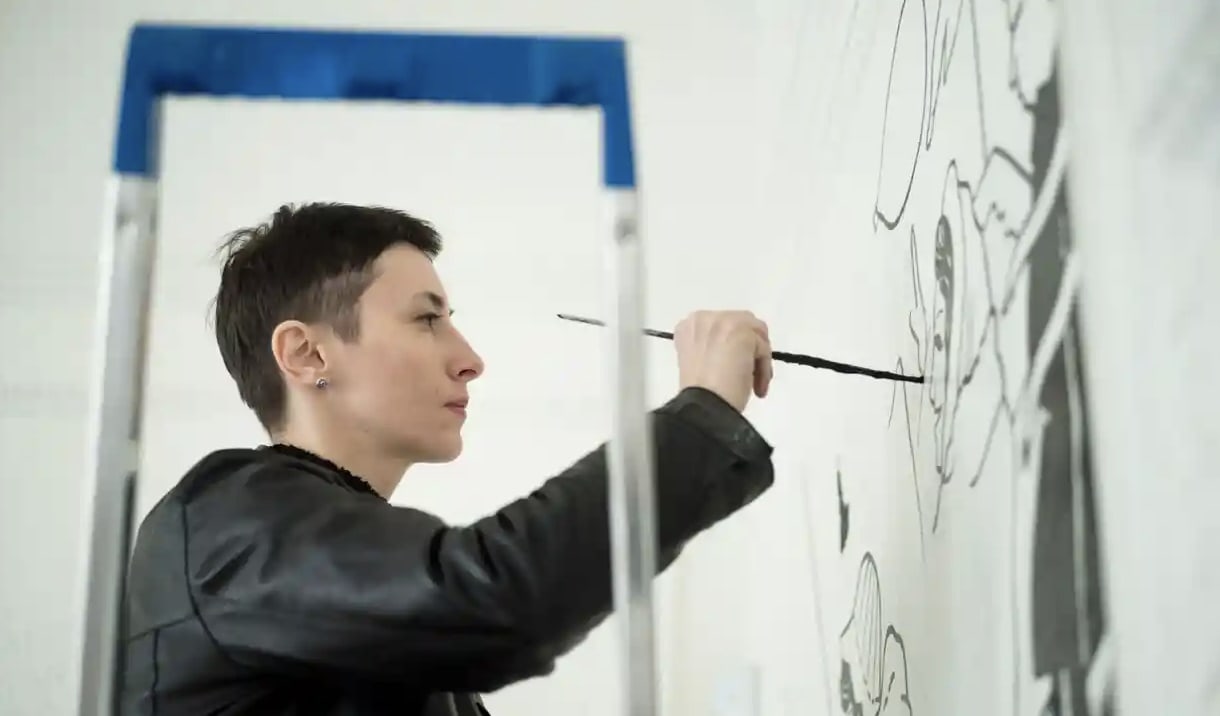02 March 2018 Skinheads, truckers, schoolkids, drinkers … Victoria Lomasko captures everyday Russians in powerful graphic novels. Now she’s in Britain with On the Eve, a show about upheavals to come.

Victoria Lomasko, Artists are supposed to be silent... Lomasko'a Russians
Victoria Lomasko documents the side of Russian life the authorities would rather no one noticed. In one typical black and white drawing, a sex worker takes a drag on her cigarette and says: “Some clients ask us to piss on them. But I’d be happy to shit on them, on behalf of all women.”
At first, Lomasko drew for herself and her friends. Now, her work is internationally acclaimed. Her first book, Forbidden Art, written with Anton Nikolaev, won Russia’s prestigious Kandinsky prize, but she has only really become known abroad since the publication last year of Other Russias. It’s a brutal, darkly funny collection of drawings of sex workers in Nizhny Novgorod, slaves in Moscow, schoolchildren in desolate villages, as well as LGBT activists and ultra-nationalists. When she toured the US last year, the New Yorker described her as “listening to ordinary Russians by drawing them one by one”, from God-fearing old ladies to young skinheads and striking truckers.
Lomasko has just flown in from Moscow for a series of events at London’s Pushkin House, including the installation of an exhibition called On the Eve, a reference to what she calls “massive changes to come” and a nod to Ivan Turgenev’s novel of the same name (she also jokes about the country being “on the eve of Putin’s re-election”). It will feature drawings from Other Russias and a new purpose-built mural, as well as work never before seen outside Russia – and some never seen inside Russia either.

Following the family tradition … Lomasko at her new show, On the Eve. Photograph: David Levene for the Guardian
Her work is not officially censored at home, she explains, although it might as well be. “It’s the same as in the Soviet period,” she says. “You don’t get arrested or interrogated. Just no curators or gallery owners want to work with you. It is like a little death of sorts, for any artist. My work does come out in Russia, but only on alternative websites that have a liberal audience in St Petersburg or Moscow. Anything more serious or more mainstream, it’s not possible.” Before the elections in 2012, things were easier, she adds. Since then, she feels the difference.
While Lomasko likes to look at the big picture, she is equally interested in everyday concerns, one current obsession being the housing situation in Moscow, in particular the 4,500 apartment buildings (including hers) that are earmarked for demolition, with plans to relocate up to 1.6 million residents. “They want to move people to worse areas, places with no infrastructure,” she sighs. “It’s internal deportation. And the residents are supposed to argue it out among themselves. Who’s for, who’s against. It’s a miniature civil war.”
Although she now lives in Moscow, she identifies strongly with Russians from outside the capital. “I was born in Serpukhov, a town 100km south of Moscow. I didn’t know anything about modern art or cinema. Everything just passed us by. The most important thing was who was getting married and when.” It’s clear from her expression that this was unimportant to her. Now 39, she enjoys the freedom of being single and child-free, taking long trips across the former Soviet Union. Her latest took her to the predominantly Islamic parts of Dagestan, to document women’s attitudes towards religion.

Travels with my pens … city snowscape by Lomasko. Photograph: Victoria Lomasko
The drawings from this trip are striking, simple and, unusually for Lomasko, occasionally in colour. A young girl in a blue flowered headscarf stands in a cafe, in front of a man in a tracksuit emblazoned with the word Russia. “They try to marry girls off in a hurry,” she says, “while they still have no opinions of their own.” Another woman, who has turned her back on her faith, wears her hair uncovered. “I put on a headscarf,” she says, “and felt as if I had died.”
Lomasko also recounts conversations with women who want their daughters circumcised, as they themselves were. “Now is a difficult time,” says one. “There are many women and few men. A girl should be circumcised so that in the event she can live alone.”
Lomasko sees her work as a continuation of a family tradition. Her father, Valentin, was the official artist in a secret military installation. His job was to design posters depicting the greatness of the Soviet Union. “The most boring thing in the world: serving power. He did hundreds of portraits of Lenin. He would say that he did not believe in it all, and that he did his job to earn money because there was no other way to live. He dreamed of being a real artist. So instead he put all his ambition into me. He’s very proud of how things have turned out.”

I’m not sloshed. I’m a saint… from Other Russias, Illustration: Victoria Lomasko
She calls her style “graphic reportage” and sketches with pencils and felt tips. “I have to do it when I’m sitting with someone, otherwise the drawings lose all their energy.” She fills them in later with paint or ink. Most are cartoon-like with soundbites in speech bubbles, but she also writes some accompanying text. “I am not a journalist,” she says, though. “I’m an artist. This can be strange for people because artists are supposed to be silent. But I wanted to talk to people and find out what they had to say.”
Although she is frequently described as an artist-activist, Lomasko’s drawings are not intentionally about protest. “My work is not political. But if you draw from life then of course it’s about society. People ask me, ‘Why do you choose controversial themes? Slavery, sex workers, LGBT activists, people in detention camps – where are the normal people?’ I always say, ‘These are normal people. That’s the whole point.’”
One friend insisted she depict “ordinary Russia”, asking her to document the “happy life” at a school in a picturesque rural community east of Moscow. When she arrived, things were so bad that a class was being taught in the school kitchen because there was no other space.


